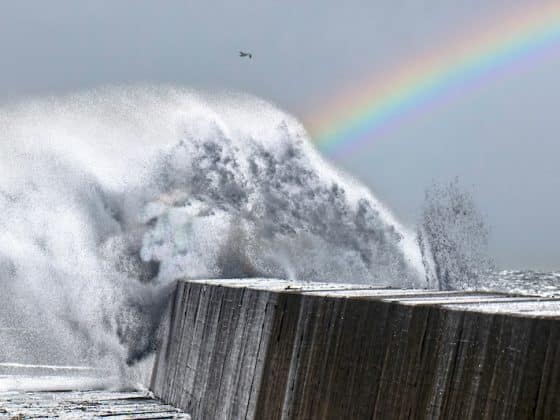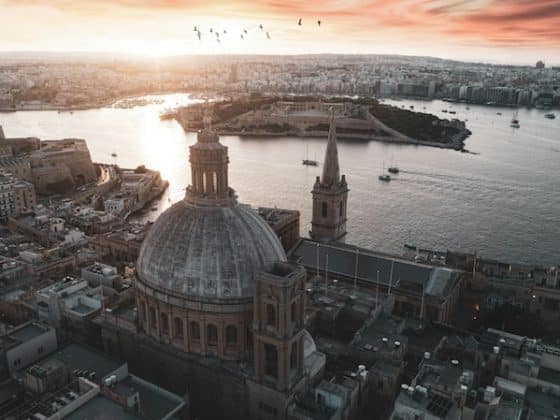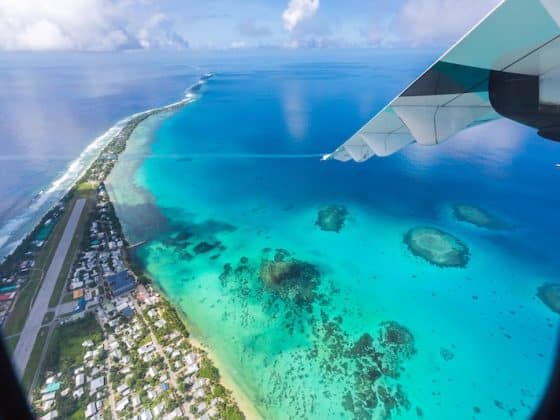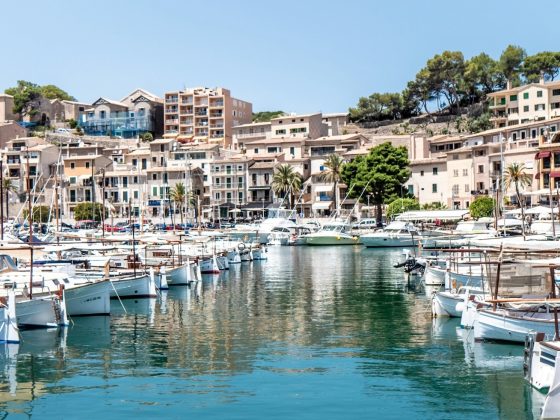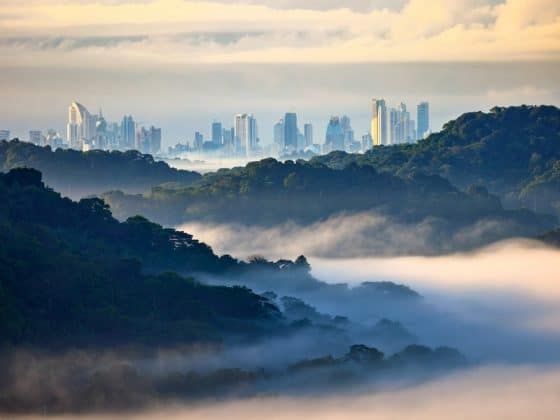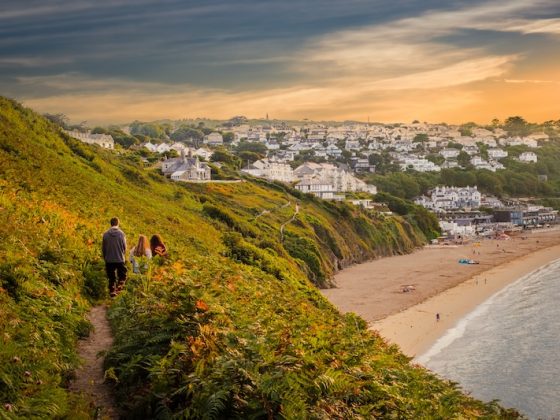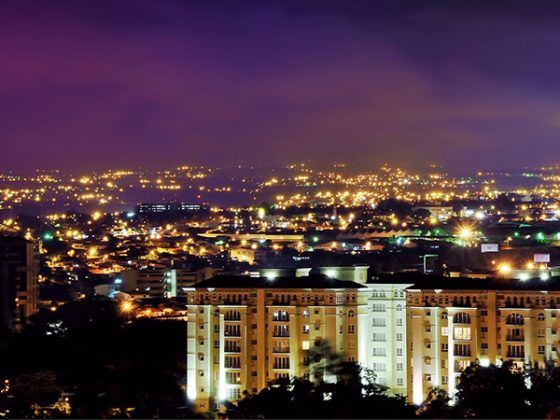Introduction
Costa Rica remains one of the clearest paths to a slower, steadier way of living. Mornings are gentle instead of stressful. Light filters through valleys. The air carries a softness that sets the tone long before the day begins. People gather in small cafés as markets start to open and local farmers arrange fruit still cool from the night air.
Those considering a move often feel the pull of this place long before they arrive. The country offers structure and calm at the same time. Daily routines feel anchored in something elemental, shaped by both the natural setting and the steady framework behind it. This article aims to bring that world into focus with detail, context, and clarity.
Why Costa Rica Continues to Grow in Popularity
The pull of stability and nature
Costa Rica’s appeal rests on a rare blend of stability and landscape. The country has spent decades investing in education, conservation, and community wellbeing, and these choices echo in daily life. Towns feel safe. Roads are improving year by year. Public institutions maintain a reliability that allows people to plan with confidence.
Yet structure is only part of the draw. The environment shapes everything from the pace to the mood. Nights settle with a softness that carries through the early hours. Hills shift from deep green to silver at dawn. Even urban spaces open toward the mountains that frame the Central Valley. For newcomers, these surroundings become part of the routine, not just scenery to admire.
Costa Rica’s commitment to peace, conservation and balance makes daily life feel stable. Grocery shelves stay stocked, roads continually improve, and foreign residents receive relatively clear guidance on visas.
Nature is as much a part of your life as you are part of nature. In many towns, birdsong acts as an alarm clock. Coffee plantations line hillsides around the Central Valley. The Pacific coast pulls tidal currents that shape long walks at low tide. Everyday tasks happen against a gorgeous backdrop that blends mountains, coves, and thick green corridors.
Who moves to Costa Rica today
The expat landscape in Costa Rica has changed significantly over the past decade. What once revolved around retirees now stretches across working professionals, young families, and long-term digital nomads. Each group arrives with its own motivations, expectations, and lifestyle patterns.
Remote workers and location-independent professionals
The first major group includes remote workers, freelancers, and online business owners. These residents want reliable fiber internet, access to coworking spaces, and a setting that encourages healthier routines. Many come from cities where long commutes and rising housing prices drained energy and time. Costa Rica offers a contrasting backdrop. Mornings can start with a walk instead of traffic. Internet speeds of 100 to 500 Mbps keep workdays smooth. Cafes in San José, Tamarindo, Nosara, and Santa Teresa stay filled with laptops and headsets.
This group often chooses communities with international social networks, but they also look for environments that feel grounded. They want a place where work-life balance feels real rather than aspirational. Lower stress levels are a common motivator. Many remote workers also pay attention to long-term residency options, since Costa Rica allows them to earn their income abroad while building stability in-country.

Retirees using the Pensionado program
Retirees make up the second major wave. They arrive for steady healthcare, mild temperatures, and a pension-friendly residency system. The Pensionado program requires only 1000 USD in monthly lifetime income, a threshold many North American retirees can meet. This creates a straightforward pathway to legal long-term living.
Healthcare is a driving factor. Costa Rica’s public system keeps costs low, and private hospitals in the Central Valley offer advanced services at accessible rates. Many retirees appreciate that they can live comfortably without luxury spending. A moderate lifestyle still includes fresh markets, community events, and high-quality medical care. A slower pace also appeals to retirees seeking more time outside, whether in coastal regions or cooler mountain towns.
Families pursuing stability and education options
Families represent the third significant group. They seek safe urban centers, outdoor-focused childhoods, and access to international schools. Many parents want children to grow up with more green space, less screen time, and stronger community ties. Costa Rica supports these priorities through national parks, weekend markets, and neighborhood life that still feels connected.
Education plays a central role. The Central Valley hosts several respected bilingual and international schools, which attract families from Europe, North America, and South America. Parents also value the country’s political stability and its emphasis on environmental awareness. The ability to raise children in a setting where nature is part of daily routines shapes many relocation decisions.
Although motivations differ, these groups share a single through-line: they want a life that feels more intentional and supported by a government that values long-term stability. Costa Rica delivers an environment where routines slow, communities feel approachable, and natural surroundings influence everyday choices.
What Makes a Place Good for Expats vs. Simply Good in Costa Rica
Costa Rica is filled with places that feel welcoming at first sight. A beach at sunset can sway anyone considering a move. A mountain town with mist drifting across the hills can feel like a postcard made real. Still, not every beautiful or pleasant location functions well for long-term expat life. The qualities that make a place inspiring for a week can differ sharply from the qualities that make it sustainable for a year.
Daily infrastructure that supports real life
A good expat-friendly destination must offer stability beneath the scenery. Reliable utilities, steady internet, and strong water pressure matter far more once the excitement of arrival wears off. Many inland towns maintain this consistency because they sit closer to major roads, government offices, and utility hubs. In remote coastal zones, outages are more common, and repairs may take longer.
Expats who work online pay close attention to details locals may overlook. Fiber internet availability. Backup power systems. Mobile signal strength on the walk from home to the café. These factors often decide which towns attract long-term residents rather than vacationers.
Healthcare and schools within reach
A place can be beautiful but sit too far from hospitals or clinics to feel practical. This distinction becomes clear when comparing smaller beach communities with Central Valley towns. San José, Escazú, Santa Ana, Atenas, Grecia, Cartago, and San Ramón have quick access to both private and public healthcare. Many coastal areas have clinics, but specialized care requires a drive inland.
Families draw similar lines around schooling. International or bilingual schools cluster around the Central Valley and several pockets of Guanacaste, which gives those areas a stronger pull for long-term relocation.
Economic balance and year-round services
A nice town for tourism thrives on seasonal traffic. Shops fill during high season, then calm down once travelers depart. A nice town for expats stays active all year. Grocery store shelves remain stocked. Restaurants stay open. Services run on predictable hours.
Expats look for local economies that do not swing wildly with tourism cycles. Towns like Atenas, Grecia, and parts of Heredia feel steady because their economies serve residents more than visitors. Tamarindo, Nosara, and Santa Teresa attract expats too, but the cost of living rises sharply during high season.
A community structure that welcomes newcomers
In many rural Costa Rican towns, life revolves around churches, schools, and long-standing social networks. These communities are warm but tightly knit. Expats often find it easier to integrate into places with existing international or bilingual networks where activities, sports, and volunteer groups make social life easier to join.
Examples include:
• The expat associations in Playas del Coco
• Community sports leagues in Atenas and Grecia
• Surf and yoga collectives in Tamarindo and Nosara
• Volunteer conservation groups along the Southern Zone

A nice place may feel charming, but a nice place for expats offers social entry points that help people build routines and friendships.
Transportation and mobility
Accessibility shapes daily life. A town may look ideal but sit far from grocery stores, schools, pharmacies, or public transport. Expats often prefer areas with predictable bus routes, well-maintained roads, and easy access to airports. The Central Valley offers this naturally due to its layout. On the coasts, some neighborhoods require a car, especially during rainy season when unpaved roads soften and slow travel.
The long-term lens
This distinction becomes clear through a simple example. A beach town might enchant visitors with golden light, pleasant streets, and sea breeze drifting through open windows. It may feel perfect for a holiday. Yet for expats, questions rise quickly. How long is the drive to the nearest hospital? How often does the internet blink out during afternoon storms? Are grocery prices manageable year-round? Does the community still function when tourists leave?
A nice place for expats balances beauty with systems that keep daily life smooth. The towns that succeed in this balance grow steadily because they allow people to picture an actual routine, not just a break from one.
Cost of Living in Costa Rica
Costs shift noticeably from region to region. Coastal towns follow tourism pricing patterns, while inland communities keep a steadier baseline. Prices also depend on how much of a lifestyle relies on imported goods, the type of housing, and the balance between local services and foreign-run businesses.
Living costs sit below those of most large North American cities, although higher than neighboring Central American countries. The country’s stability and healthcare system influence overall expenses, which is why many expats prefer to compare Costa Rica with Portugal, Spain, or Mexico rather than with Guatemala or Nicaragua.
Housing costs across major expat regions
Housing remains the largest monthly cost for expats, and it varies based on proximity to beaches, the level of modernization, and seasonal demand.
Updated average:
• San José:
$600 to $900 for a one-bedroom apartment in a more small town setting. High-rise buildings in desirable expat communities with amenities may climb to $1000-$1800 USD.
• Escazú or Santa Ana:
$900 to $1500 USD for modern apartments close to malls, gyms, and schools. Luxury buildings can exceed $1800 USD.
• Tamarindo:
$1100 to $2000 USD depending on distance from the beach and peak season. Short-term rentals rise sharply from December to April.
• Uvita or Ojochal:
$900 to $1600 for long-term rentals, often with jungle views or small pools. Supply is limited, which keeps prices above inland averages.
• Puerto Viejo:
$700 to 1$200 for simple, comfortable homes. Prices increase closer to Cocles or Playa Chiquita.
In real estate, the spread is broader. Beachfront property in Guanacaste often surpasses $600,000 USD due to land scarcity and tourism demand. In contrast, the Central Valley offers more variety. Homes in Atenas, Grecia, or San Ramón typically range from $180,000 to $350,000 USD, which reflects the cooler climate, stronger infrastructure, and more balanced year-round demand.
These figures match the patterns established in your earlier expat-cost guides.
Groceries, utilities, and transportation
Food costs depend heavily on habits. Local produce markets keep prices low. Imported cheeses, wine, or specialty ingredients raise them quickly.
Groceries:
A couple typically spends $350 to 500 USD per month when mixing local staples with foreign brands. Costs fall closer to $280 USD for those who rely mostly on local products.
To break things down, Supermarkets like Auto Mercado and Más x Menos offer familiar brands at a premium. A couple who mixes local goods with a few imported favorites usually spends $70 to $150 USD per week. But ferias shift the equation. Fresh produce costs far less there, often $15 to $30 USD for the week. These markets happen early, with fruit and vegetables laid out while the day is still cool. Many residents treat the feria as both grocery run and community gathering.

Utilities:
Electricity is the most variable expense. Coastal homes that rely on air conditioning pay $150 to $300 USD monthly. Inland regions where fans suffice usually fall between $60 and $100 USD. Water remains inexpensive at $10 to $25 USD monthly. Fiber internet costs $45 to $80 USD depending on speed and provider, consistent with earlier tech and remote-work sections you wrote. Entertainment costs tend to match what people are used to abroad. Most cable packages begin near 30 USD, and streaming subscriptions hold steady at their usual international rates.
Transportation:
Public buses across cities cost $1 to $3 USD per ride. Intercity routes generally fall between $5 and $12 USD. A full tank of gasoline costs roughly $6.50 USD per gallon based on late 2024 averages. Car ownership adds maintenance and road tax costs, but many expats in the Central Valley rely comfortably on buses, Uber, and short taxi rides.
The difference between coastal and inland living
The cost contrast between coastal and inland regions is one of the most decisive factors for expats.
Coastal towns carry higher prices for three main reasons:
• Tourism demand shapes rental markets and services.
• Modern homes with pools, ocean views, and foreign-owned businesses cost more to maintain.
• Heat requires daily air conditioning, raising electricity bills.
Inland towns like Atenas, Grecia, Cartago, and San Ramón offer lower housing costs, more predictable pricing, and cooler temperatures that keep electricity bills modest. These towns also provide easier access to public hospitals, schools, government offices, and transportation networks, which appeals to families and retirees looking for stable long-term living. Coastal life offers proximity to beaches and expansive views, but inland life offers laidback neighborhoods, lower costs, and easier access to everyday amenities.
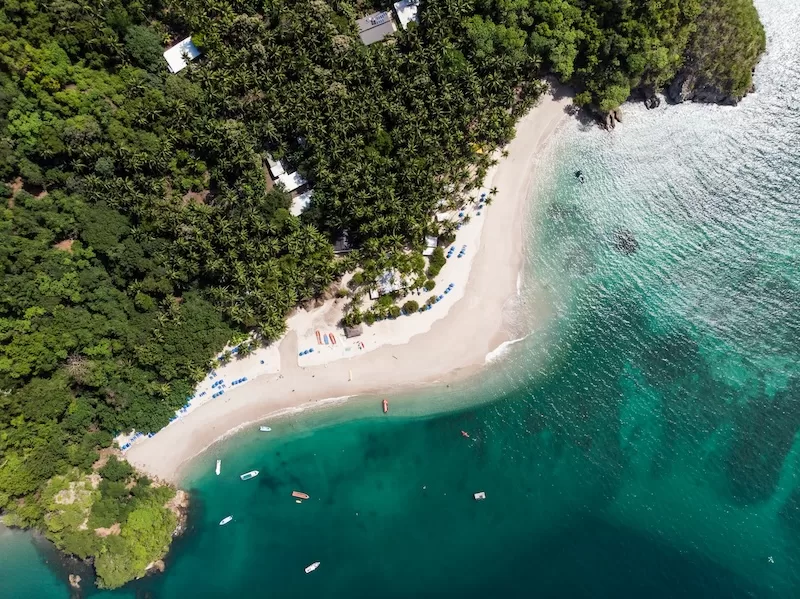
Read More Like This: Costa Rica Cost of Living Guide: Prices, Budgets, and Tips
Best Places to Live in Costa Rica for Expats
Each region carries its own character. Cooler valleys, surfer towns, laidback Caribbean communities, and polished suburbs all paint different pictures of daily life.
Costa Rica is compact on a map but incredibly varied on the ground. A single drive can move from cool misty hills to sunlit beaches and then into tropical lowland forests. Each region shapes its own routine, its own kind of silence or energy, and its own expat community. What feels right depends on the balance someone wants between comfort, nature, infrastructure, and social life.
Below is a deeper look at the regions most favored by expats, including what makes each place a strong long-term choice and which type of resident thrives there.
Central Valley: San José, Escazú, Santa Ana
The Central Valley remains the heart of expat settlement. Its draw comes from practicality as much as beauty. Temperatures stay mild year-round. Roads are smoother. Hills curve along the horizon in every direction. Hospitals, embassies, and government offices sit close together. Grocery stores carry everything from fresh market produce to imported European brands. Life feels structured and predictable.
What makes it ideal for expats
• Strongest healthcare access in the country.
• Multiple international schools for families.
• Reliable public services and high-speed fiber internet.
• The widest range of long-term rentals and modern housing.
• A transportation network that makes car-free living possible in many areas.
Who thrives here
• Families who want academic stability and safe neighborhoods.
• Remote workers needing dependable internet and easy logistics.
• Retirees who prefer quick hospital access.
• Anyone who wants convenience, multicultural social life, and reduced weather extremes.
Regional distinctions
• San José carries the cultural core with museums, theaters, historic districts, and a growing restaurant scene.
• Escazú appeals to expats seeking upscale living, international supermarkets, and private clinics.
• Santa Ana has modern condos, parks, and a suburban feel that attracts long-term remote workers.
This region is less about postcard views and more about smooth everyday life. For many expats, that makes it the perfect base.

The Gold Coast: Tamarindo, Flamingo, Playas del Coco
Guanacaste’s coastline, known as the Gold Coast, is Costa Rica’s sunniest stretch. Dry tropical forests meet long beaches, and the roads connecting towns grow more polished each year. Days are bright. Cafés buzz with early activity before the heat settles in. The vibe of these towns matches people who find energy near the water. The region is open and sunny. It has become a magnet for people who want guaranteed sunshine and strong expat networks without losing access to modern comforts.
What makes it ideal for expats
• Excellent internet coverage compared to other coastal regions.
• Easy access to supermarkets, gyms, clinics, and international restaurants.
• A well-developed tourism economy that supports year-round services.
• Some of the most active expat communities in the country.
Who thrives here
• Remote workers looking for the beach life without sacrificing stability.
• Retirees who want warm weather and easy social connections.
• Long-term digital nomads who want movement, activity, and nightlife.
• Young families who prefer bilingual schools with outdoor-centered programs.
Regional distinctions
• Tamarindo blends surf culture with a structured expat presence. Cafes stay full of laptops. Surfboards lean against balconies. The area attracts people who enjoy structured social life mixed with frequent activity.
• Flamingo leans more residential. It appeals to those who want calmer streets, upscale homes, and clean shoreline views.
• Playas del Coco draws expats who prefer practicality. It has big supermarkets, a walkable center, clinics, and an established community deeply rooted in daily routines.
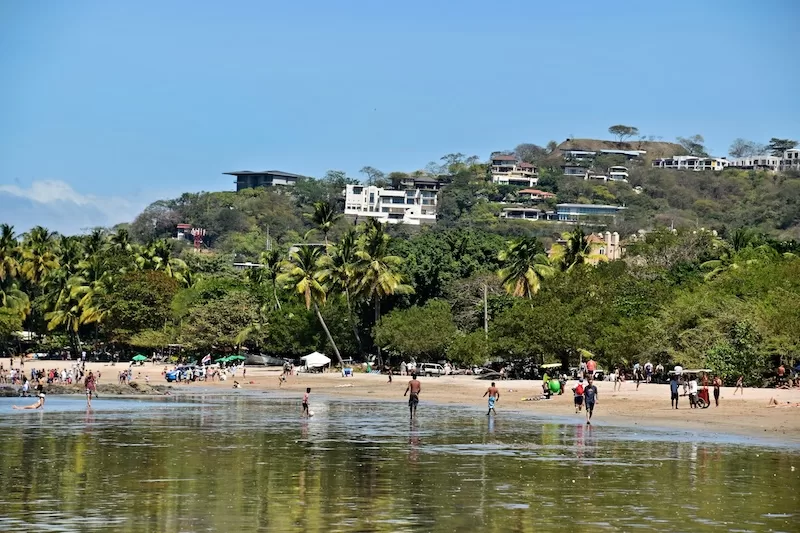
The Gold Coast is the strongest match for expats who picture themselves waking up near the ocean but still want modern conveniences within arm’s reach.
Southern Zone: Uvita, Ojochal, Dominical
The Southern Zone carries a different mood. Mist rises over jungle ridges. Waterfalls pulse after rainfall. The coastline shifts from deep blue to silver as clouds move across the sky. Hillsides drop sharply toward the Pacific, and the landscape feels dramatic. Toucans cross open sky at sunrise. Life is shaped by nature instead of schedules.
Although the region feels remote compared to Guanacaste, it attracts a specific kind of expat: someone looking for peace, space, and strong community values rather than nightlife or long commercial corridors.
What makes it ideal for expats
• A close-knit expat community that supports newcomers.
• Abundant nature, constant wildlife, and national park access.
• Cooler microclimates in the hills.
• Strong farm-to-table culture and creative entrepreneurship.
• A reputation for safety and community-driven living.
Who thrives here
• Nature lovers and wellness-driven expats.
• Retirees seeking serene routines in a scenic area.
• Remote workers who want slower days and green surroundings.
• Food enthusiasts drawn to Ojochal’s well-known culinary scene.
• People who enjoy smaller communities with strong social ties.
Regional distinctions
• Uvita offers structure. It has supermarkets, banks, clinics, and a layout that makes life smooth despite the natural backdrop.
• Ojochal attracts people who value good food, gentle hillsides, and slower living. Dining options here are unusually diverse.
• Dominical appeals to creative spirits and ocean-loving expats who enjoy a mix of surf culture, art, and relaxed energy.
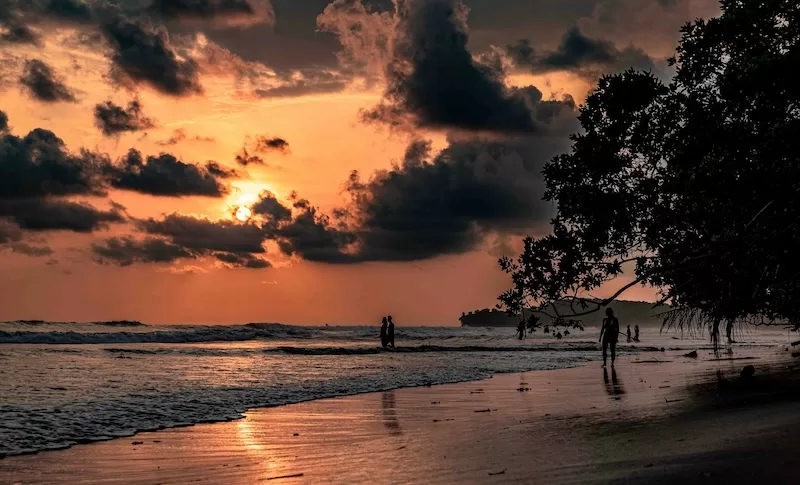
The Southern Zone is ideal for those who want raw beauty with enough infrastructure to make long-term living comfortable.
Caribbean Coast: Puerto Viejo and Cahuita
The Caribbean side offers a more laidback vibe shaped by Afro-Caribbean culture, warm breezes, and coastal forests filled with birdsong. Coconut rice scents the air at lunchtime. Sea breezes move through small wooden houses painted in bold colors. Nature feels close and warm.
The area is not as developed as Guanacaste, yet it draws expats who value culture and community over polished infrastructure.
What makes it ideal for expats
• A strong sense of community and cultural richness.
• Lower overall housing costs compared to the Pacific.
• Access to Cahuita National Park and relaxed beaches framed by forest.
• A slower vibe that many long-term residents cherish.
Who thrives here
• Younger expats and creatives seeking a different cultural rhythm.
• Remote workers who enjoy beach-town simplicity.
• Long-term travelers who value community over modern amenities.
• Retirees looking for affordability in a warm coastal environment.
Regional distinctions
• Puerto Viejo has a lively center, strong bike culture, eclectic restaurants, and a youthful, international atmosphere.
• Cahuita offers a calmer lifestyle with long morning walks in the national park, friendly neighbors, and small café culture.
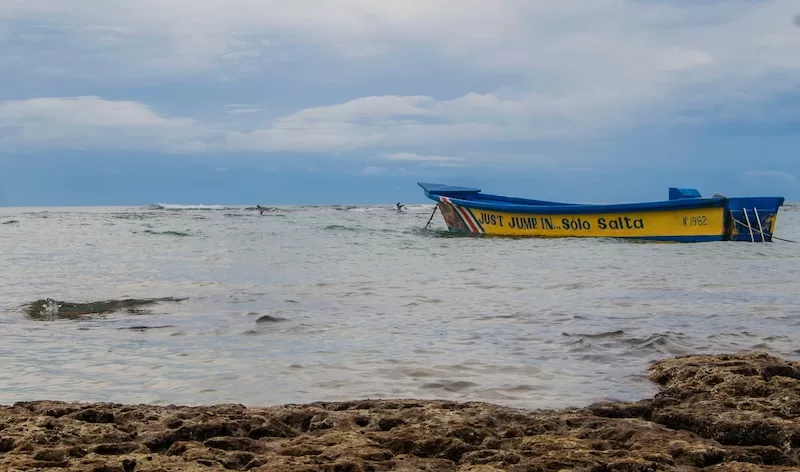
This coast is perfect for expats who prefer depth of community and cultural immersion to polished living.
Read More Like This: Costa Rica Homes for Rent: Best Areas, Prices, and Tips for Expats
Residency Requirements in Costa Rica
Costa Rica offers clear residency paths for expats. Requirements can shift slightly each year, so official updates should be reviewed on the Dirección General de Migración y Extranjería website.
Temporary residency categories
Common options include:
• Pensionado: Requires at least $1000 in guaranteed monthly income from a lifetime pension.
• Rentista: Requires proof of $2500 in monthly income or a deposit of $60,000 in a Costa Rican bank.
• Investor: Requires a minimum investment of $150,000 in real estate or qualified projects.
Temporary residency lasts two years and can be renewed.
Permanent residency
Permanent residency typically becomes available after three years of holding temporary status. Investors may qualify earlier under certain conditions.
Health insurance and documentation
Residents are required to enroll in the public healthcare system known as the CCSS. Private insurance can be added for more flexibility. Documentation includes FBI background checks, marriage certificates, and income verification.
Working and Living in Costa Rica as an Expat
Relocating to Costa Rica brings a mix of practical considerations and lifestyle adjustments. Remote workers want to know how dependable the internet is, how daily routines unfold, how safe the country feels, and what happens when the initial excitement wears off. Long-term expats describe Costa Rica as a place that can support a stable worklife, but it rewards those who arrive with realistic expectations and a willingness to adapt.
Below is a full breakdown of what remote work and daily living truly look like.
Remote work infrastructure
Costa Rica’s digital infrastructure has expanded steadily over the past decade. The country made early investments in fiber optics and electricity generation, and the result is a surprisingly reliable foundation for remote workers.
Internet quality and availability
Fiber speeds of 100 to 500 Mbps are now common in the Central Valley and in established coastal towns like Tamarindo, Nosara, Santa Teresa, Playas del Coco, and Jacó. These towns have strong demand from both expats and local professionals, which keeps providers competitive. In rural zones or deep jungle areas, speeds can be slower, and outages may last longer during storms.
If remote work demands video calls or large file uploads, most expats choose:
• A Central Valley base such as Escazú, Santa Ana, Heredia, or Atenas.
• Well-developed coastal communities where fiber has already reached most neighborhoods.
Power outages do still occur, though they have become less frequent. Some homes and coworking spaces keep battery backups and generators. Remote workers who rely on time-sensitive tasks often choose homes with backup systems in place.
Coworking spaces and cafés
Costa Rica has a healthy coworking scene. Tamarindo, Santa Teresa, San José, Nosara, and Playa Hermosa all have dedicated coworking hubs with meeting rooms, quiet zones, outdoor terraces, and community events. These places help remote workers keep structure in their routines and meet other professionals.
Most cafés provide comfortable seating and consistent WiFi, though smaller beach towns may lack air conditioning or steady noise levels. Work sessions often unfold with windows open to let the air move through. People who prefer café working usually pick larger towns where cafés cater to digital workers.

Time zones and communication
Costa Rica runs on Central Time without daylight savings, which aligns smoothly with North America for most of the year. This makes scheduling calls simple and reduces the strain of late-night or early-morning meetings.
For those working with Europe, mornings start earlier. Many remote workers adjust their workflow to enjoy afternoons outdoors once calls end.
Safety, healthcare, and daily life
Expat life depends on far more than WiFi. Safety, healthcare access, neighborhood routines, transportation, and emotional comfort all shape long-term satisfaction.
Safety overview
Costa Rica is considered one of the safest countries in Latin America, especially outside of certain pockets in San José and Limón. Violent crime rates stay relatively low. Most incidents involve petty theft in tourist areas. Expats typically feel comfortable walking in neighborhoods like Escazú, Santa Ana, Grecia, Atenas, Tamarindo, and Playas del Coco, especially during the day.
Many residents add common-sense habits into their routine such as locking doors and avoiding leaving valuables visible in cars. The culture around safety feels similar to southern European cities rather than the high-risk environments people sometimes associate with Central America.
Healthcare quality
Healthcare is one of the strongest pillars of life in Costa Rica. The country runs a dual system:
• Public healthcare (Caja Costarricense de Seguro Social – CCSS) offers low-cost coverage with hospitals and clinics across the country.
• Private healthcare provides short wait times, English-speaking doctors, and advanced facilities, especially in San José and Escazú.
Many expats mix both systems. Private consultations often cost $60 to $100. Complex procedures cost significantly less than in North America.
Emergency care is accessible across major population centers. Coastal towns may have smaller clinics, but specialized care typically requires a drive to the Central Valley. This is why retirees and families often live inland or choose coastal towns within comfortable distance of high-quality facilities.
Daily vibe and lifestyle
Daily life in Costa Rica tends to revolve around small routines and outdoor movement. The climate shapes the day. Morning skies stay clear and cool, which encourages early exercise and errands. Afternoons can bring heat or rain depending on the region, and evenings settle quietly with cooler breezes.
On weekdays, the rhythm often looks like:
• Early morning walk or trip to the bakery.
• Work hours set around the most comfortable part of the day.
• Lunch at a soda with typical dishes like casado or gallo pinto.
• Afternoon break when rain moves through.
• Evenings spent cooking, reading, exercising, or meeting friends.
Fresh markets fill weekends with produce, herbs, flowers, and local cheeses. Beaches and hiking trails sit within easy reach from many towns. Even routine grocery trips can involve scenic drives along mountain roads or coastal stretches.
Transportation and mobility for working expats
Remote workers must consider how they will move through daily life.
Car vs public transport
In the Central Valley, many expats use buses, Uber, or taxis for daily errands. Everything sits relatively close: supermarkets, coworking spaces, fitness centers, and clinics.
On the coast, cars become more useful. Some beach towns have unpaved roads that slow travel during rainy season. A small SUV often becomes the practical choice. Gas prices are higher than in the United States, so many expats consolidate trips or shop in larger towns with better supermarkets.
Commute times
Living near a coworking space can reshape the day. In Tamarindo or Nosara, people often bike to work. In Escazú or Santa Ana, commuting by Uber or short bus rides keeps routines flexible. If remote workers do not want to drive, the Central Valley is the easiest long-term option.
Work productivity and personal adjustment
Working abroad brings emotional changes. Costa Rica supports a healthier routine, but the shift can surprise new arrivals.
Climate and productivity
Heat in coastal zones affects focus, especially in mid-afternoon. Many remote workers shift their schedules to mornings. Inland regions like Grecia, Heredia, San Ramón, and Atenas attract workers who want cooler air and steady indoor comfort.
Noise levels
Nature-oriented living comes with birdsong, motorcycles, roosters, and occasional neighborhood celebrations. People who need very quiet environments choose modern apartments or homes in planned communities.
Groceries and food routines
Supermarkets stock imported brands but at higher prices. Many remote workers switch to a more local pattern: cooking simple meals with regional produce, buying fresh bread from small bakeries, and visiting weekend markets for fruits and vegetables.

Sense of purpose and mental wellbeing
Many expats report feeling healthier within months of arrival. Access to nature, slower routines, and regular outdoor movement help reduce stress. At the same time, distance from family and familiarity can create pockets of loneliness. This is why social integration becomes essential rather than optional.
Integration into local communities
The strongest long-term experiences come from building connections. Costa Rica rewards effort here.
Language learning
Even basic Spanish opens doors. Ordering food, chatting with neighbors, and asking for help become easier. Locals appreciate the effort and often respond warmly.
Community participation
Volunteer groups, language exchanges, beach cleanups, hiking clubs, sports leagues, and expat meetups help new arrivals find a place. In towns like Atenas or Grecia, neighborhood life feels especially welcoming. Coastal communities may feel more transient, but they still maintain strong networks.

Building friendships
Friendships form slowly but deeply, especially in smaller towns. It is common to see neighbors sharing fruit from their garden or inviting newcomers to local events. Expats who remain open and patient usually integrate well.
The bottom line for someone deciding
Working and living in Costa Rica can feel rewarding, stable, and deeply grounding. Internet quality supports most remote careers. Healthcare is strong. Safety levels compare favorably to the region. Nature sits close enough to shape daily routines. The shift requires flexibility, but the benefits often show up early: clearer mornings, calmer evenings, and a lifestyle shaped by intention rather than urgency.
Challenges Expats Should Know About
Life in Costa Rica brings fresh routines, gentler mornings, and nature at every turn, but it also carries a learning curve. The country rewards people who arrive prepared and willing to adapt. Below are the most common challenges, along with a few lesser-known ones that new arrivals often discover only after settling in. Each challenge is manageable with the right mindset and a few practical strategies.
Bureaucracy and timelines
Residency paperwork can be frustratingly slow. Most applications take several months to process, and it is normal for requirements to shift without much notice. Apostilled documents, background checks, fingerprints, translations, and bank statements all require coordination.
Hidden challenges
• Communication from offices may be slow.
• Multiple visits to immigration are often required.
• Appointments can be delayed during holiday periods.
• Rules may vary slightly depending on the local branch.
Tips for overcoming it
• Work with a reputable residency attorney to avoid repeated submissions.
• Keep digital and physical copies of all documents in organized folders.
• Track every deadline in a calendar to avoid lapses.
• Expect delays and plan legal timelines with generous buffers.
A calm approach goes a long way. Most expats eventually receive their approvals as long as paperwork is complete and expectations stay realistic.
Climate considerations
Costa Rica’s climate varies sharply between regions and seasons. Guanacaste’s dry season turns hills golden. The Caribbean brings frequent rainfall. The Central Valley feels springlike most of the year. New arrivals sometimes underestimate the intensity of coastal heat or the suddenness of afternoon storms.
Hidden challenges
• Air conditioning dramatically increases electricity costs.
• Mold can develop in humid regions if airflow is poor.
• Electronics age faster in salty or humid environments.
• Clothes and towels take longer to dry during rainy months.
• Road conditions change quickly after storms.
Tips for overcoming it
• Choose housing based on microclimate, not just scenery.
• Run dehumidifiers in coastal homes.
• Install ceiling fans and improve ventilation to cut electricity costs.
• Use surge protectors to protect electronics.
• Give yourself two full seasons to understand the real yearly weather cycle.
Climate can affect everything from productivity to mood. A region that looks perfect in January may feel different in September, so long-term decisions benefit from patience.
Cost differences compared to other Central American countries
Costa Rica is more expensive than Nicaragua, Honduras, or Guatemala. Wages, land values, and higher import costs shape prices. The country’s stability, healthcare system, and environmental protections also influence the cost structure.
Hidden challenges
• Imported foods can be significantly more expensive.
• Services aimed at tourists increase costs in coastal towns.
• Vehicle maintenance is costly due to road conditions and imported parts.
• Private schools and bilingual programs raise family budgets.
Tips for overcoming it
• Mix imported groceries with local staples like fresh produce, eggs, beans, and fish.
• Shop at ferias (local markets) to reduce food spending.
• Choose inland towns if long-term affordability is a priority.
• Consider hybrid schooling options for children if available.
• Track monthly expenses for the first six months to adjust expectations.
Costa Rica rewards people who adapt their lifestyle instead of replicating their home country’s consumption patterns.
Transportation and mobility challenges
Public buses connect most of the country, but routes may not align with daily routines outside the Central Valley. On the coast, distances can be large and roads are rougher.
Hidden challenges
• Roads may flood during rainy season.
• Potholes can appear quickly after storms.
• Some towns lack sidewalks or bike lanes.
• Driving after dark can be stressful due to limited lighting.
Tips for overcoming it
• Rent a car for the first month to understand local conditions before buying.
• Choose a small SUV if living in rural or coastal areas.
• Map housing locations based on access to main roads.
• Avoid driving long distances at night.
Transportation is manageable once routines settle, but the learning curve surprises many new arrivals.
Costa Rican culture emphasizes courtesy, patience, and gentle communication. Processes may feel slower for new arrivals used to fast responses and direct language.
Hidden challenges
• Some services take longer than expected.
• Direct confrontation is avoided socially.
• Friendships build slowly, especially in small towns.
• English is not widely spoken outside expat-heavy areas.
Tips for overcoming it
• Learn basic Spanish to bridge early gaps.
• Slow communication style leads to smoother interactions.
• Participate in local events to meet people naturally.
• Stay flexible during early months to avoid frustration.
Adjustment takes time, but the cultural warmth becomes one of the country’s strongest draws once integrated.
Housing and construction realities
Homes in Costa Rica vary widely in quality, especially on the coast.
Hidden challenges
• New builds sometimes lack insulation.
• Some homes attract insects due to climate, not cleanliness.
• Water pressure can fluctuate during high-demand months.
• Location determines how well a house handles heavy rain.
Tips for overcoming it
• Always visit a property at different times of day before signing a lease.
• Ask for recent electricity bills to understand cooling costs.
• Verify water pressure directly during a showing.
• Choose homes with good ventilation to reduce mold risks.
Knowing what to check prevents the most common surprises.
Unexpected low periods and emotional adjustment
Life in Costa Rica can feel peaceful, but this change can also be unexpected. People who come from cities sometimes struggle with the slower pace.
Hidden challenges
• Towns may feel too quiet in low season.
• Social circles fluctuate as digital nomads come and go.
• Distance from family or urban energy can feel heavy at times.
Tips for overcoming it
• Join coworking spaces or activity groups to meet others.
• Build a weekly routine with movement, hobbies, and small excursions.
• Travel between regions to refresh your rhythm when needed.
• Stay mindful that emotional adjustment often takes six to twelve months.
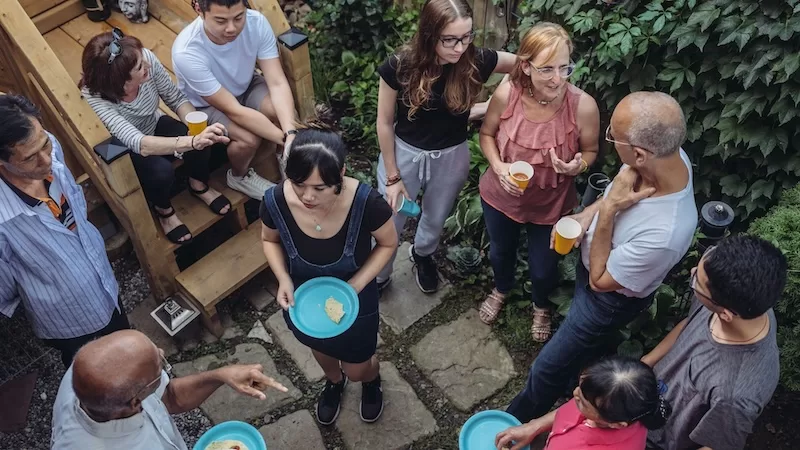
The bottom line
Every challenge in Costa Rica remains manageable with preparation and the right expectations. People who thrive here are not the ones who avoid challenges, but the ones who adjust with patience, curiosity, and a willingness to learn how the country functions. Costa Rica rewards this attitude with a life that feels calmer and shaped by natural pulses rather than constant urgency.
FAQs
Q1. Is Costa Rica safe for expats?
Safety levels remain relatively high for Latin America. Most issues involve petty theft in tourist zones. Urban areas around the Central Valley are monitored heavily. Expats typically feel secure by following common-sense habits.
Q2. Can expats work legally in Costa Rica?
Not under temporary residency categories unless they own a business or hire local staff. Remote work for foreign companies is permitted. Those seeking local employment must apply for a work permit that fits specific categories.
Q3. How expensive is healthcare in Costa Rica?
Public healthcare is extremely affordable. Private care costs more but still stays far below North American prices. Many residents mix both systems. Private hospitals in San José offer advanced treatments and English-speaking staff.
Q4. towns are best for digital nomads?
Tamarindo, Santa Teresa, Nosara, Escazú, and Santa Ana stand out due to strong internet, coworking centers, and active communities. The Central Valley offers the most stability for year-round work routines.
Q5. What is the cost of living for a couple in Costa Rica?
A couple typically spends between $2000 and $3500 monthly depending on housing, location, and imported goods. Inland towns sit on the lower end. Coastal areas fall on the higher end.
Q6. Can you live in Costa Rica long term?
Yes. Residents can renew temporary visas and eventually apply for permanent residency. Many expats remain for decades and fully integrate into local communities.
Q7. Is it easy to find housing?
Supply varies by region. The Central Valley provides the widest range. Coastal towns offer plenty of rentals but seasonal tourism can raise prices. Long-term leases often secure better rates.
Q8. How is transportation around the country?
Public buses connect all major cities and towns. Domestic flights shorten long distances. Many expats rely on cars, especially in rural areas where bus routes are limited.
Q9. Does Costa Rica have good internet for remote work?
Yes. Fiber internet has expanded quickly. Speeds of 100 to 500 Mbps are common. Rural areas may experience occasional interruptions, but most towns popular with expats maintain reliable service.
Q10. Is Costa Rica a good choice for retirement?
Many retirees choose Costa Rica for its climate, healthcare, safety, and community life. The Pensionado program offers an accessible visa route. Social circles form easily through clubs and volunteer groups.
A New Chapter in the Land of Blue Horizons
Costa Rica remains one of the clearest paths to a life shaped by balance, nature, and community. The country’s stable framework sits alongside landscapes that help everyday life feel more rooted and intentional. Valleys roll toward peaceful towns. Coastal mornings glow with soft light over the water. Markets fill with fruit that carries the scent of nearby hillsides. This mix of simplicity and stability continues to attract people from around the world. People come for many reasons, but they stay because the country gives them room to slow down without losing momentum.
For anyone exploring a move, Costa Rica offers a setting where life slows just enough to make room for new habits. Some come for retirement. Others arrive with laptops and flexible schedules. All share the same curiosity about what life can look like when it is lived with intention.
If this guide helped clarify the essentials, there is much more to discover. Subscribe to our newsletter for monthly relocation tips (and a lot more), or download our free “Costa Rica Handbook”, with even more useful information to make your transition as smooth as possible.
Contact Author
"*" indicates required fields
Stay Ahead on Every Adventure!
Stay updated with the World News on Escape Artist. Get all the travel news, international destinations, expat living, moving abroad, Lifestyle Tips, and digital nomad opportunities. Your next journey starts here—don’t miss a moment! Subscribe Now!

